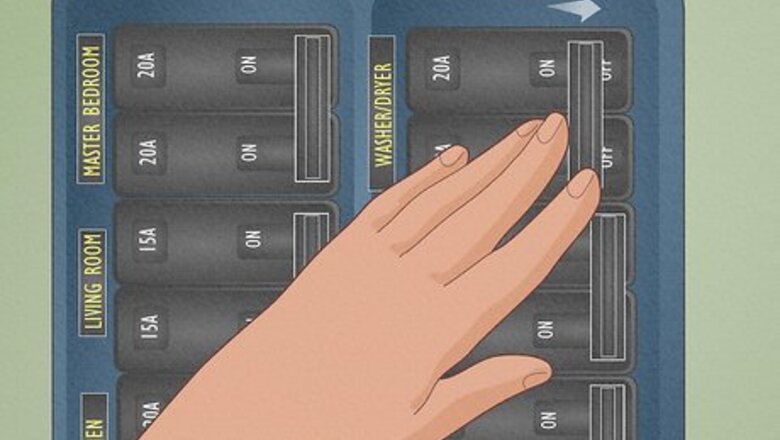
views
The breaker tripped.
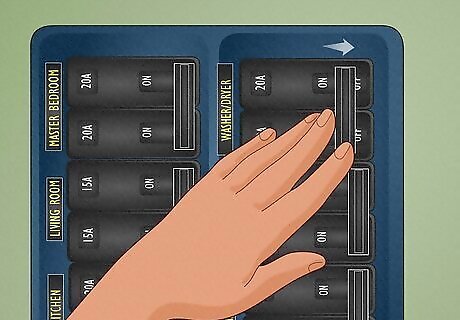
Check to make sure the breaker is on. If there’s a power surge, it can cause the breaker on the dryer to trip to prevent electrical damage. Open your breaker box and locate the dryer’s breaker, then flip it back to its original setting. If the breaker isn’t clearly marked, check for one that’s twice as wide as the others. Ensure the power cord is plugged in and intact. Press on the plug to ensure it’s firmly plugged in and inspect the cord to see if it’s damaged. Replace the cord if necessary—electric dryers should have a 240V power cord with 3-4 wires.
The control lock is on.
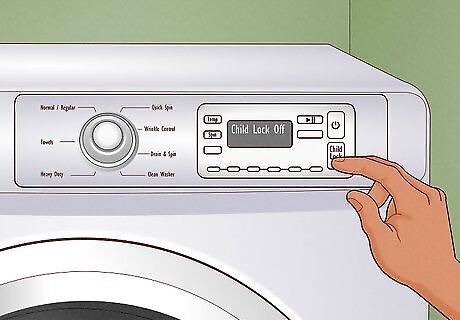
Turn off your control lock by pressing the appropriate buttons. If the drum won’t spin or the dryer’s code says “LOC,” “CL,” or “LC,” your dryer’s control lock might be on. Many modern dryers have a control lock safety feature that prevents the dryer from turning on accidentally. Some dryers might turn on but won’t spin unless the lock is turned off. Here’s how to turn off the control lock on some of the most common dryer brands: GE: Press and hold the “Extended Tumble” and “-” (minus) buttons for 3 seconds. LG: Turn your dryer on and hold the “Child Lock” button down for 3 to 5 seconds, or simultaneously press and hold the two buttons with a lock symbol for 3 to 5 seconds. Maytag touchscreen: Go to “Tools” and swipe up on the “Control Lock” button. Whirlpool: Press and hold the “End of Cycle” button for 3 seconds. Whirlpool touchscreen: If the screen displays a small padlock inside a circle, swipe up. If you can’t find the dryer control lock, consult your owner’s manual to see if your dryer has a unique method of unlocking.
The drum bearings are worn down.
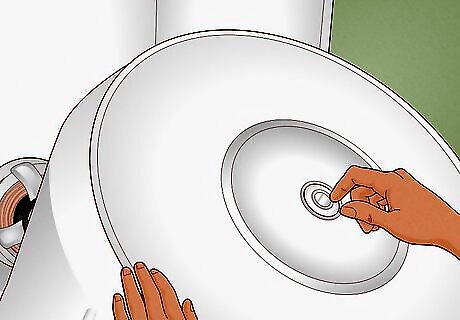
Check the bearings in your dryer drum. If the drum glide bearings in the front or back of your dryer are faulty, it can make a squeaking or rubbing sound near the front of your dryer before it stops turning. If you're not familiar with a dryer's parts, it's probably best to hire a professional. Or, you can replace the bearings yourself: Unplug the dryer, remove the top cover, disconnect the wiring harness, take off the front panel, and carefully remove the drum belt and the drum. The back glides look like rubber pads underneath where the drum was. If the bearings along the edges of your drum are damaged, look for replacements for your dryer model and replace them as a set. The front glides are located on the inside edge of the bulkhead or on the front panel of the dryer where the underside meets the drum. If they look worn, torn, or damaged, replace them as a pair.
The drive belt is damaged.
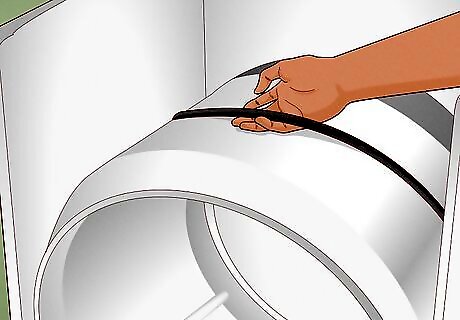
Check that the belt is intact and tight against the dryer drum. This is one of the most common reasons a dryer stops spinning, and it can be simple to fix. The belt attaches to the motor and spins the drum. When it breaks or wears down, it can cause the drum to seize up or stop moving entirely. To change a clothes dryer belt: Unplug your dryer and open the top cover. The belt should run along the center of the dryer drum. Use your hand to spin the drum and check the belt for damage. If the belt is damaged or broken, find the number printed along the belt and order a new one. Take note of how the belt is oriented so you can put it back on correctly later—the ribbed side should be against the drum.
The idler pulley is worn or broken.
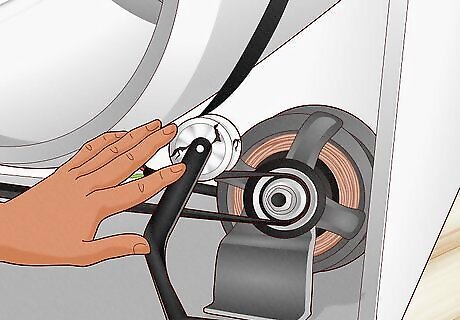
See if the idler pulley is damaged while checking the belt. If the belt looks intact but isn’t tight against the drum or doesn’t glide smoothly, the idler pulley might be broken. This is a relatively easy fix, but if you’re unsure how to do it, you can always call a professional. To replace the idler pulley yourself: Unplug your dryer and remove the top cover, front panel, drum belt, and drum. Locate the idler pulley next to the motor. If the large plastic wheel doesn’t spin smoothly on the shaft or if it’s missing, use your dryer’s make and model to find a replacement. If you decide to go with an off-brand pulley, make sure it has a metal bearing to prevent it from melting in the dryer. Insert the metal clip at the bottom of the new pulley into the bottom of the dryer or screw it into the side of the motor. If your pulley comes with a spring, use a pair of tweezers to thread it through the holes near the bottom of the pulley.
The drum rollers or axles are damaged.
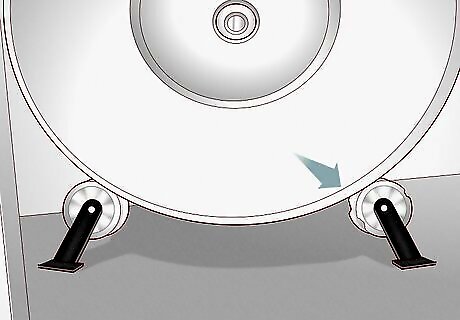
Inspect the rear drum rollers and axles for damage. The rollers allow the drum to rotate—if they become damaged, the dryer might make a loud rumbling sound or stop altogether. To replace the rollers yourself: Remove the top cover, disconnect the wiring harness, remove the front panel, and take out the drum belt and the drum. Spin the wheels that were underneath the drum with your hand to see if they rotate smoothly. If they don’t, unscrew or gently pry any supports holding them in place. If you have a Samsung dryer, disconnect the wiring harness after removing the front panel. Unscrew and separate the bulkhead from the drum and inspect the support rollers inside. If the axles look excessively worn or damaged, plan to replace them as well. Purchase a drum roller kit using the make and model of your dryer.
The door switch is broken.
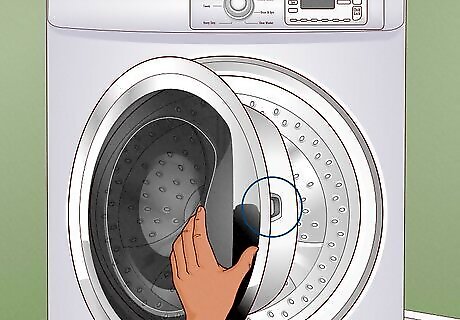
Check that the plastic door switch is working. When the door switch is working, the peg clicks and allows the door to shut. If the peg is bent, use a pair of pliers to gently straighten it. If it looks okay and the dryer is still not turning on, it may be an electrical issue. You can remove the switch and test it with a multimeter to see if it’s working properly. If it’s not, you will need to replace it. Unplug your dryer, open the top cover, disconnect the wiring harness, and open the dryer door. Unscrew either side of the door switch and pull it out. Set your multimeter to the continuity or lowest Ohm setting and clamp the “NO” or “NC” terminals and the “COM” terminal. If the meter doesn’t beep, replace the switch. To install a new switch, open the top cover of your dryer and screw in the new switch inside the dryer door. Attach the switch’s wires to the plastic harness, then reattach the cover.
The thermal fuse has shorted out.
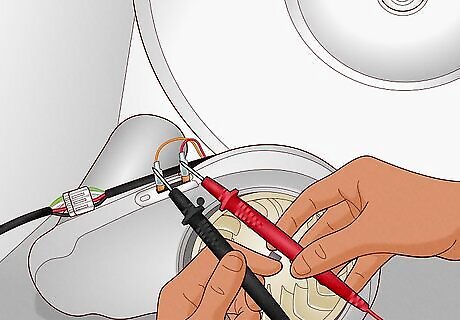
Test the thermal fuse to make sure it’s functioning properly. The thermal fuse is a safety feature designed to protect your dryer from overheating and potentially causing a fire. When the thermal fuse shorts, it can cause your dryer to stop working. Call a repair person or use a multimeter to test whether the fuse has shorted and replace it. To test the fuse: Unplug the dryer, unscrew and remove the vent duct, and move the dryer a couple of inches away from the wall. Unscrew the nuts on the dryer’s lower back panel and open it up. Remove the thermal fuse from the panel by carefully disconnecting the wires. Take note of which wires go to which terminal of the fuse so you can put them on correctly afterward. Test the fuse using the continuity setting on a multimeter. If the fuse isn’t working, purchase a new one for your dryer model. To keep from replacing the thermal fuse in the future, clean the lint out from inside the ventilation system. Test the heating element and replace it as necessary.
The motor overheated or broke.
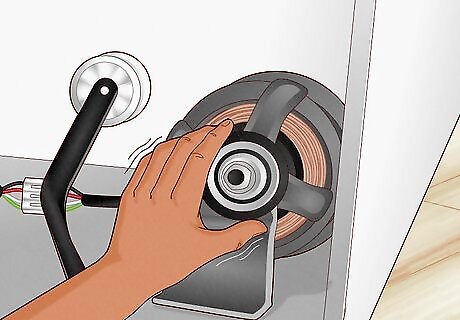
Test to see if the dryer motor is the cause of the issue. The motor rotates the drum of the dryer and can overheat or become blocked if too much lint builds up over time. You can check if the motor is the issue by trying to turn the shaft by hand. If the motor is the issue, it will need to be replaced by a licensed professional. To test if the motor works: Unplug the dryer. Remove the top cover, unplug the wiring harness, take off the front panel, and remove the drum and the drum belt. Attempt to turn the motor shaft by hand. If it’s stuck or it still won’t turn on after reassembling the dryer, hire a repair technician to replace it.
The electronic control board died.
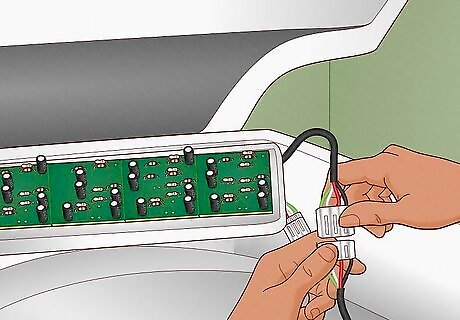
Call a professional to replace your control board. If all of the parts above are working properly and the dryer still doesn’t run, the electronic control board may need to be replaced. Since this is a more advanced repair, consider hiring a licensed appliance repair professional to look over your dryer and replace the control board. The price for replacing a control board can be between $250-500, so in some cases, it may be more worthwhile to purchase a new dryer altogether.
















Comments
0 comment